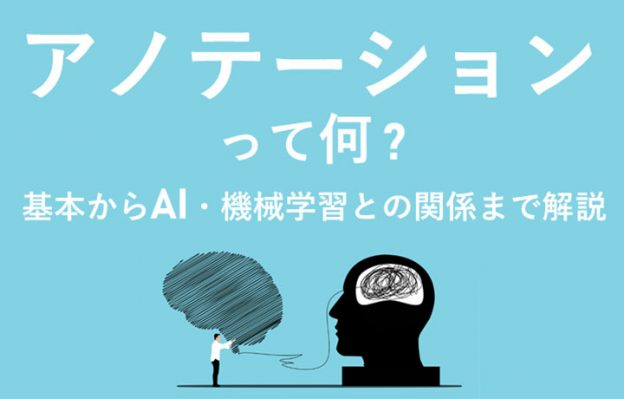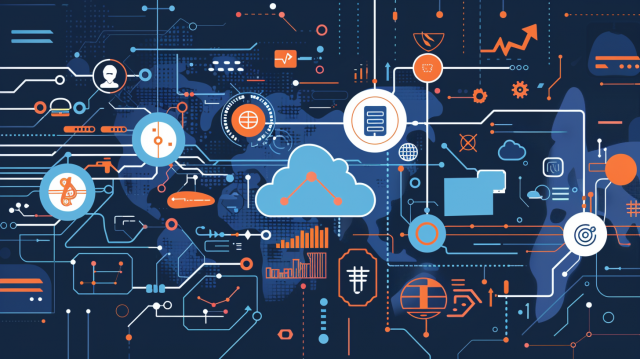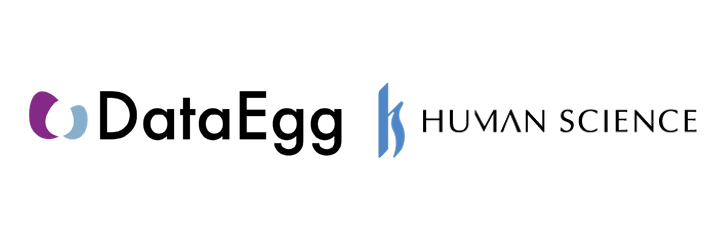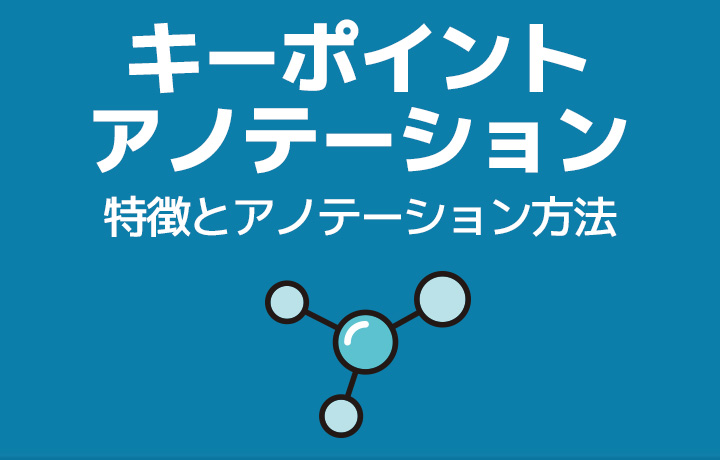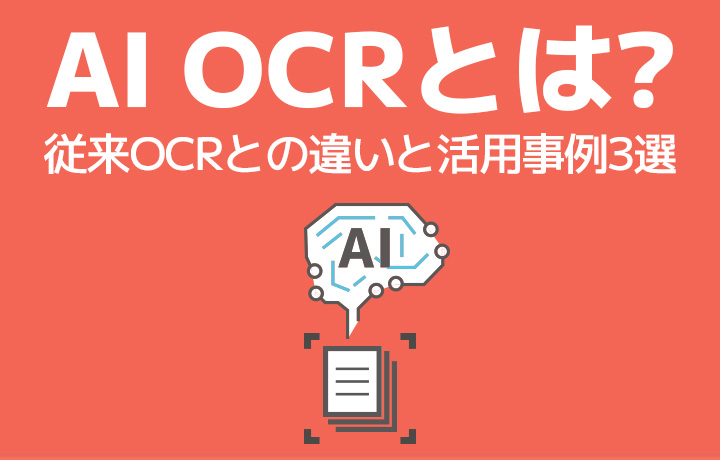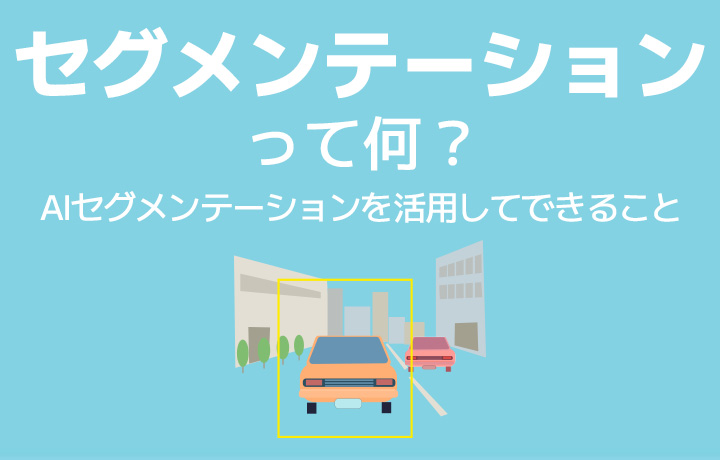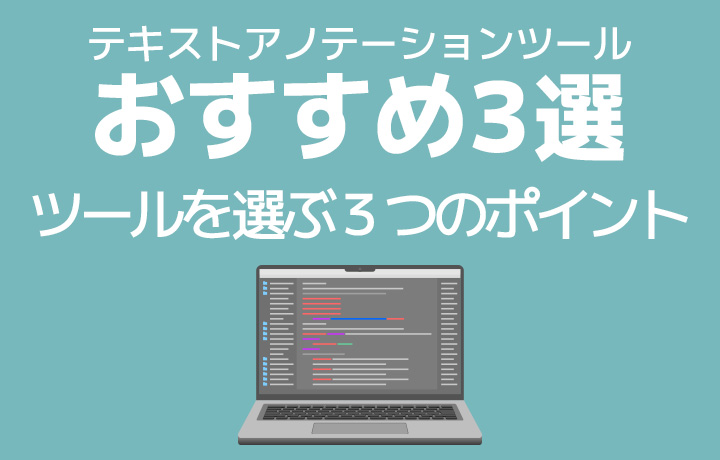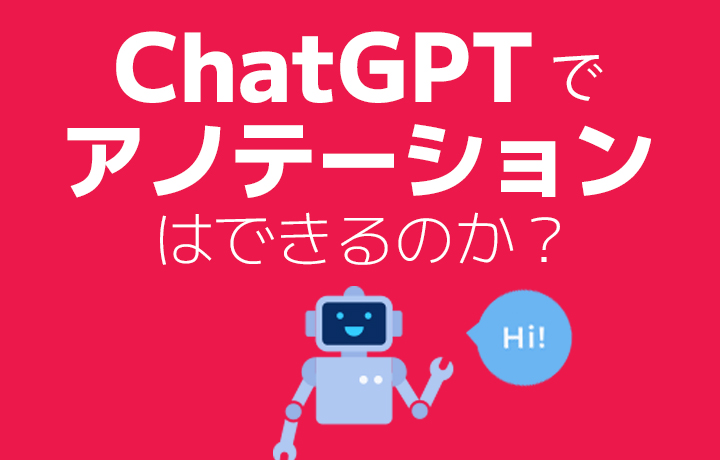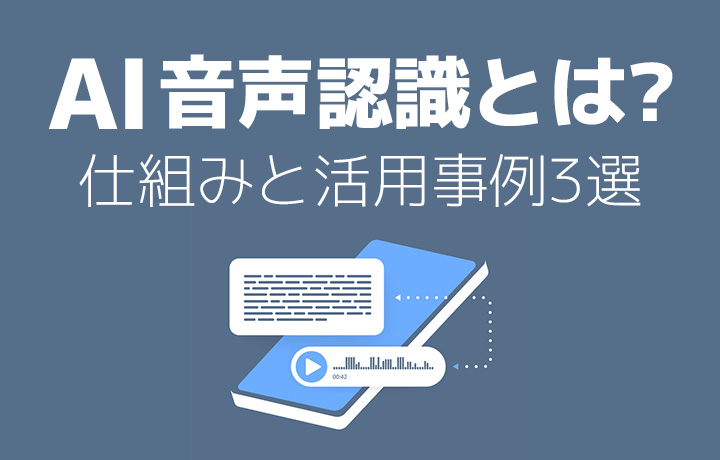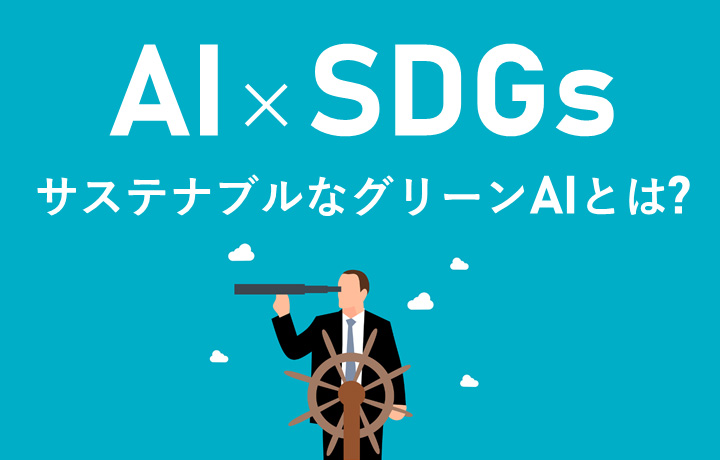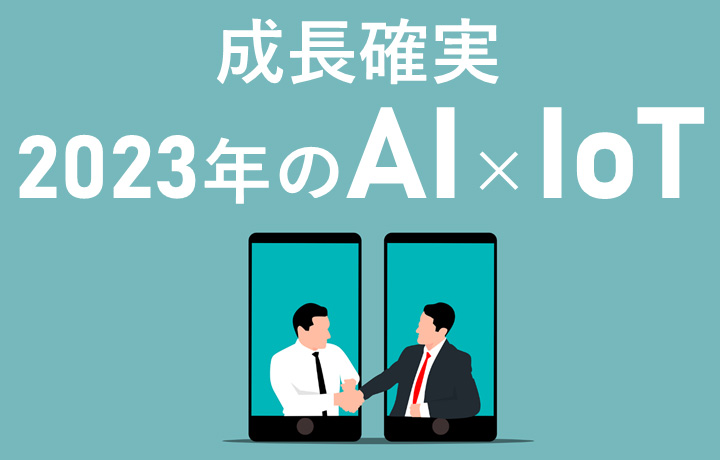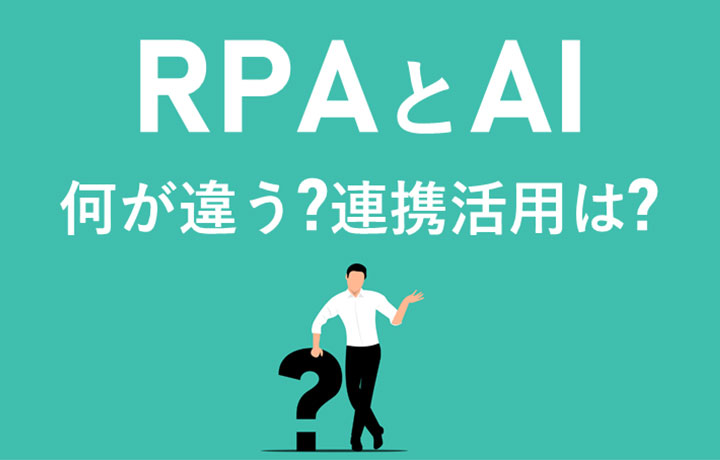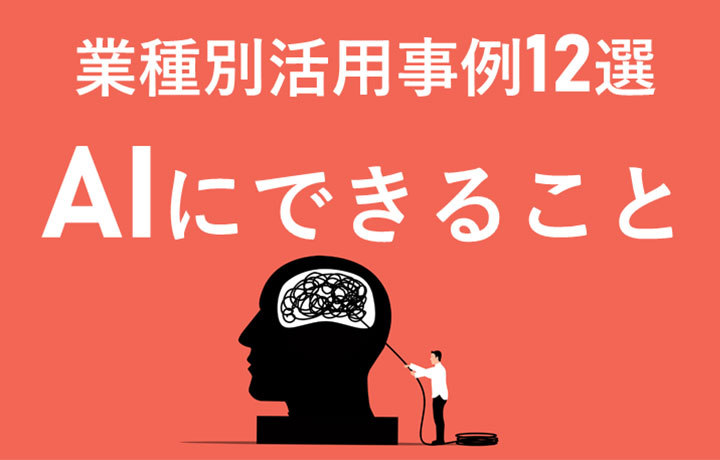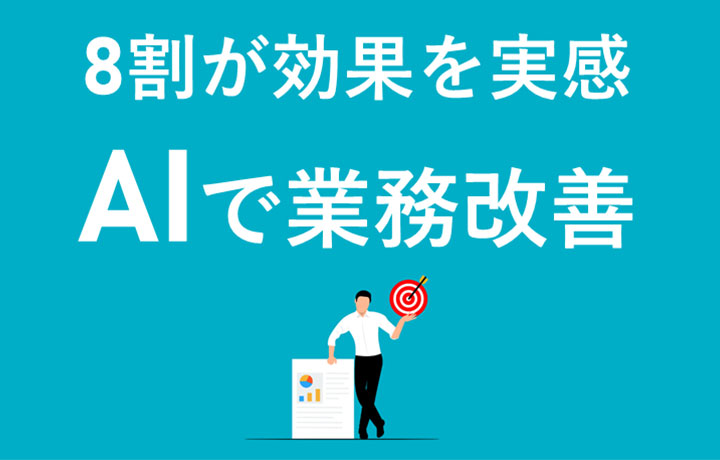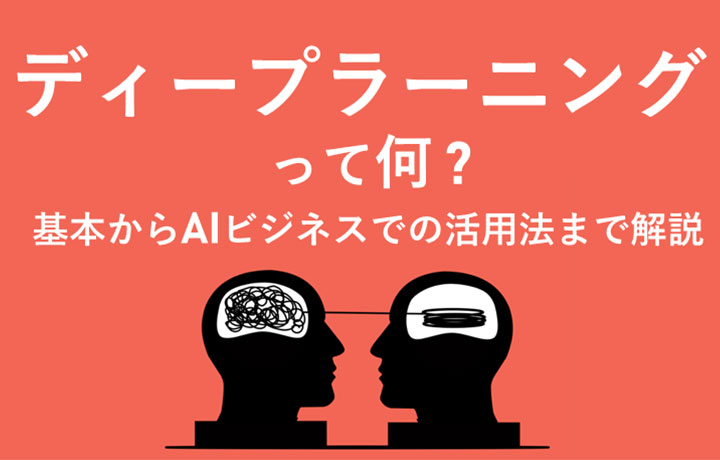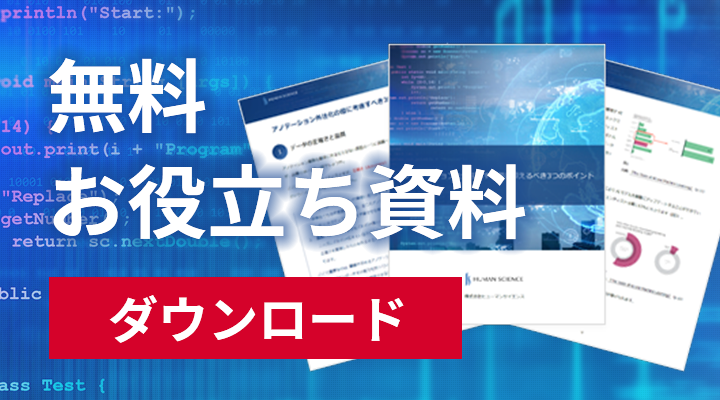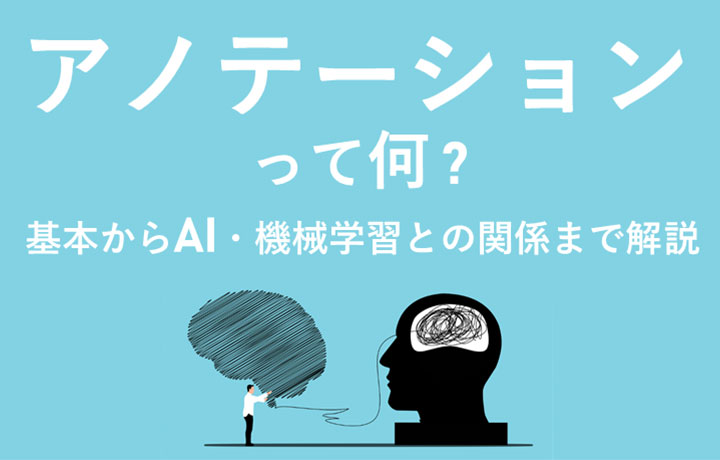
In recent times, as the use of AI has advanced, one of the words we encounter more frequently is annotation. Here, for those who do not understand what annotation is as it is commonly discussed, we will start by talking about "what annotation is."
- Table of Contents
-
- 1. What is annotation? In what situations is it used?
- 1-1. What is Annotation
- 1-2. Situations Where You Encounter the Term Annotation
- 1-3. Why Annotations are Gaining Attention
- 1-4. Means to Effectively Utilize Vast Big Data
- 1-5. Create training data necessary for AI machine learning
- 2. The Role of Annotation in AI Development
- 2-1. Annotation for Creating Teacher Data
- 2-2. The Mechanism of Machine Learning Using Teacher Data
- 3. Specific Types of Annotations
- 3-1. Image Annotation
- 3-2. Audio Annotation
- 3-3. Text Annotation
- 4. Demand for Annotation Linked to the Development of AI
- 4-1. Annotation Essential for the Development of AI Technology
- 4-2. Increasing Demand for Annotation in the Future
- 5. Human Science Annotation Agency Services
- 5-1. Achieved 48 million teacher data creations
- 5-2. Resource Management Without Using Crowdsourcing
- 5-3. Utilizing the latest data annotation tools
- 5-4. Complete Security Room in Our Company
1. What is annotation? In what situations is it used?

1-1. What is Annotation
Annotation refers to the English word that means "note" or "comment." In the field of IT, the process of attaching information called tags or metadata to each form of data, such as text, audio, images, and videos, is referred to as annotation.
1-2. Situations Where You Encounter the Term Annotation
This term is also used in YouTube's settings options. Recommended videos and subscription buttons that appear over the screen at the end of a video are also a type of annotation. Here, information is added to a specific area on the screen.
When you type "annotation" into Google, the word "java" is suggested alongside it, because annotations are also what engineers write to share with others what the code is used for when writing code.
1-3. Why Annotations are Gaining Attention
Annotation and tagging of data have become essential for effectively utilizing and managing the vast amounts of data known as big data, which is beneficial for businesses. Additionally, annotation is indispensable in creating training data necessary for AI machine learning, which is said to improve operational efficiency.
In recent years, due to the declining population caused by low birth rates and an aging society, there has been a continued labor shortage across various industries. This has led to a focus on the utilization of big data and AI.
1-4. Means to Effectively Utilize Vast Big Data
Big data does not have a clear definition and refers to vast amounts of data that are difficult for humans to comprehend. These data sets include social data written on social media and behavioral logs collected from websites. When leveraging these data sets for business, detailed data analysis is required. By using annotations and tagging the data, it becomes easier to analyze and classify the data, allowing for efficient utilization in business.
1-5. Create training data necessary for AI machine learning
AI (Artificial Intelligence) can make predictions about future data based on data collected from big data. To achieve this, machine learning that uses a large amount of training data is required. In annotation, by adding information tags (metadata) that specify "what type of data this is," we can create the necessary training data for AI to learn correctly.
2. The Role of Annotation in AI Development
2-1. Annotation for Creating Teacher Data
In the process of AI development, the process of adding information to data is called annotation. The annotated data is referred to as training data and is used for machine learning in AI. Annotation in AI development refers to the work of creating training data.
The positioning of annotation is illustrated in this way.

Let's organize the terminology here for a moment.
AI: Refers to artificial intelligence itself.
Machine Learning: Training for AI to improve accuracy.
Training Data: Data used for machine learning.
Annotation: The process of creating training data.
2-2. The Mechanism of Machine Learning Using Teacher Data
For example, a human shows an AI a picture of an "onigiri" and teaches it both the question "What is this?" and the answer "This is an onigiri." The human shows many similar pictures repeatedly. As a result, the AI gradually learns what an "onigiri" is, and the accuracy of its answers when asked "What is this?" increases, with responses like "This is an onigiri" or "This is not an onigiri."

In this example, the task of adding information to image data, such as the question "What is this?" and the answer "This is an onigiri," is called annotation. This task is performed manually. Once the information has been added, the data becomes training data used for machine learning.
Just like humans, the more AI learns, the higher its accuracy becomes. To further improve the accuracy of AI, a large amount of training data is required.
Please refer to this article for the meaning and creation of training data.
>>What is training data? An explanation from its relationship with AI, machine learning, and annotation to how to create it.
3. Specific Types of Annotations

There are different types of annotations depending on their purpose. Here, we will explain three types: "image", "audio", and "text".
3-1. Image Annotation
Image annotation can be broadly classified into three categories.
・Object Detection
Find objects in images and tag them with meaningful labels such as "onigiri," "human," or "car" according to the subject.
・Region Extraction (Semantic Segmentation)
Select areas within the image and tag them. Identify the meaning of the selected areas, such as "This area is seaweed," "This area is clothing," "This area is a door," etc.
・Image Classification
Tags attributes to images. Adds information such as "is it salmon or roe?", "is it polka dot or stripe?", "is it open or closed?".
3-2. Audio Annotation
There are cases where tagging is done for volume and type of sound, as well as cases where tagging is done for the meaning of words spoken by humans. In the latter case, it is common practice to transcribe the speech into text and tag each individual word. This is mainly utilized in the fields of speech recognition and intent extraction.
3-3. Text Annotation
Through annotation, it is possible to extract specific texts from a large number of documents or to aggregate necessary texts and phrases from scattered data according to the desired information. Tagging can be performed according to pre-set rules, allowing for document identification and content analysis. It is also used for the purpose of removing inappropriate content.
Additionally, documents can be semantically classified using pre-defined labels. Among text annotations, this is sometimes referred to as text classification annotation, and for example, categorizing articles on news sites into categories such as "Economy" and "Politics" can utilize such annotations.
4. Demand for Annotation Linked to the Development of AI

4-1. Annotation Essential for the Development of AI Technology
To enable AI to perform intelligent tasks, it is necessary to train the AI using annotated data. The increasing capabilities of AI are always backed by the annotation process.
4-2. Increasing Demand for Annotation in the Future
As the use of AI expands across various fields, such as voice recognition and intent extraction with "Hey Siri" and "OK, Google" on smartphones and AI speakers, suggestion features in e-commerce, and applications in the medical and construction industries, the annotation market is also showing significant growth.
5. Human Science Annotation Agency Services
5-1. Extensive track record of creating 48 million teacher data entries
At Human Science, we participate in AI development projects across various industries, including natural language processing, medical support, automotive, IT, manufacturing, and construction. To date, we have provided over 48 million high-quality training data through direct transactions with many companies, including GAFAM. We handle a wide range of annotation projects, from small-scale projects to long-term large-scale projects with 150 annotators, regardless of the industry. If your company wants to implement AI but doesn't know where to start, please feel free to consult with us.
5-2. Resource Management Without Using Crowdsourcing
At Human Science, we do not use crowdsourcing. Instead, projects are handled by personnel who are contracted with us directly. Based on a solid understanding of each member's practical experience and their evaluations from previous projects, we form teams that can deliver maximum performance.
5-3. Utilizing the latest data annotation tools
One of the annotation tools introduced by Human Science, AnnoFab, allows customers to receive progress checks and feedback from the cloud even during the project. By ensuring that work data cannot be saved on local machines, we also take security into consideration.
5-4. Complete Security Room in Our Company
Human Science has a security room that meets ISMS standards within our Shinjuku office. We can handle even highly confidential projects on-site. We consider the assurance of confidentiality to be extremely important for any project. Our staff undergoes continuous security training, and we exercise the utmost care in handling information and data, even for remote projects.

 For the medical industry
For the medical industry For the automotive industry
For the automotive industry For the IT industry
For the IT industry